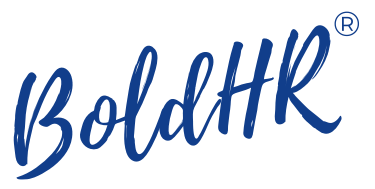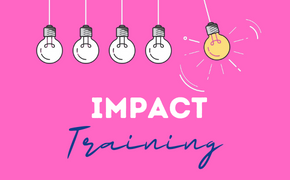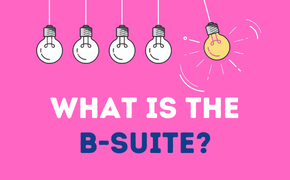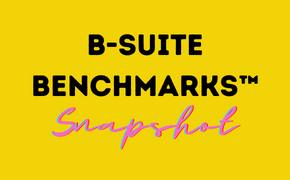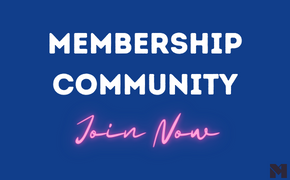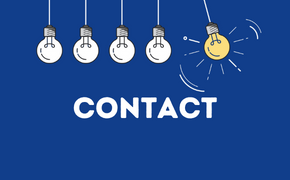https://www.youtube.com/watch?v=et78D1yDLR8
According to Forbes, employee turnover is the highest it’s been in 10 years, and around 50% of that turnover occurs in the first year of employment. And the major culprit? Traditional approaches to Onboarding. Over the last decade, significant investment has been made into Recruitment & Talent Acquisition practices to streamline and automate that process to become more engaging and more efficient to run.
The same cannot be said about Onboarding. Why?
Because it’s not clear what is meant by Onboarding
One of the first lessons I learned when trying to resolve Onboarding issues at Australia Post was that everyone has a different opinion of what Onboarding means. If you ask HR or shared services teams what Onboarding is, they will give you the answer based on functional roles – onboarding for payroll is totally different to onboarding for L&D, real estate, IT, etc.
As a result, the typical experience is function-centric, rather than user-centric
Ever had to go through an experience where you had to input the same information into various forms over and over again? Of course, you have; and if you’re thinking “I’m just trying to get one job done here, not 20” then you are looking at an experience that is ripe for user-centric redesign. A function-centric approach is intrinsically silo’d with the needs of the function served first (compliance, approvals, efficiency etc). Ultimately this view is seen as lots of separate jobs to be done in order to onboard someone. In my last job, we had 17 different functions involved in the experience of onboarding someone. And all of them felt confident that they were accountable for onboarding and that they were doing it well. And they were right – each individual function was doing their job efficiently, compliantly, and within their individual SLAs. When we asked hiring managers and candidates about their experience of this collective of high performing and well-intentioned functions they told us the experience was appalling. Why? Because they were doing 17 jobs instead of 1. Most medium-large organisations that I work with today suffer from this same issue.
And this means no-one has accountability for the whole experience
Where, in this picture, is the Onboarding function? Well, there isn’t one. It’s an experience rather than a function. And only functions have a place on a traditional org chart, which makes it hard for organisations to allocate accountability.
The good news is that many employee onboarding mistakes are fairly uncomplicated to solve.
Resolve accountability
This could take the form of: · an exec sponsor to ‘own’ the experience · an Onboarding forum to collaborate on the redesign · an entirely new Onboarding function to work out new ways of working Whatever you choose, you need the accountable body to own design decisions, budget allocations and ongoing governance around: · Develop cross-functional and experiential baseline and benchmarks · Develop and win your business case · Oversee the process of reDesign · Arbitrate on any functional implications of the proposed change · Change Management · Feedback and surveys throughout the lifecycle for continuous improvement · Underpinning Technology You know what they say – no accountability no action? This is a key issue that keeps onboarding unfixed – because each of those functions thinks it is fixed, and each of those functions thinks they own it. Until that mindset changes, true transformation is impossible.
Get user-centric
Some organisations remain uncertain about taking a user-centric approach to their processes. They worry that great experiences are delivered at the cost of efficiency, or that human centred design doesn’t take into account things like compliance, both of which are incorrect. By using the common sense approach of asking all your users what actually happens now and what should happen ideally, you’ll find the sweet spot for hiring managers, candidates AND functional specialists (staff delivering the services are employee users too). From a manager’s perspective, onboarding a new starter is one job (“get Jane on board”): · They only want to say it once – whether it’s informing the organisation that a new starter is coming, or filling in their personal details. · They want the organisation to make sensible, basic assumptions (like what equipment & access is required) rather than asking them to confirm the same thing every time. · They do feel accountable for the experience of their new starter, so they would like some visibility of what’s going on, especially if there are any delays. From a candidate’s perspective, it’s also just one job (like “get a new job” was just one job): · Candidates want contact between offer and day 1 so they are ready for day 1 · They want you to be ready for them on day 1 too, they take it as evidence that you value them · They want to contribute asap and know that they are doing a good job From a specialist’s perspective, they want:
- to add value rather than manage processes
- to find efficiencies
- to be appreciated for the work they do
Simple, right?
Introduce Pre-boarding
Between offer and start date, there’s a huge opportunity for maintaining engagement levels, and speeding up onboarding. Most candidates are very happy to get some of their onboarding done in their notice period, and they particularly enjoy: · Completing the paperwork that ensures you’re ready for me on day 1 · Meeting my new team-mates (physically or virtually) · Picking my own equipment (what phone would I like?) · Reading some additional corporate context (in fact most experienced hires actively ask for strategies, annual reports etc these days). · Some are happy to get their compliance training done at home before they start (it’s so isolating to do that for 2 days in your first week) ALL want to know details about their first day
Nail your Day 1 Readiness – it’s mainly admin after all
A hiring manager recently told me that this was the part that made him ‘lose the will to live’. New starters have to be onboarded to Payroll and a range of other HR systems. They need to order phones, laptops, safety gear, and even cars. They need IT system access to a range of general and specific programs, a security pass to enter the premises and a workspace to be allocated. They need to complete their basic training and get booked into induction (if you have it). Navigating this list of tasks sits with the manager. Unsurprisingly, given the vast number of moving parts, this often proves too hard and fails, especially in time for day 1. We’ve all heard stories of new starters using temporary passes for weeks, desk-hopping or using another’s log-in to do their training (you know it’s true!). They may right the situation over the coming weeks, but there’s no question that precious ground has been lost on the engagement front – which may never be recovered. It’s time to automate and streamline those tasks, and free up the manager for the higher value conversations.
Plan out 90 days and beyond
In most cases, Onboarding stops after pre-boarding and provisioning – and if you have neither of those, they’re an essential investment that will get your new starter ready to go faster, with a better impression, and more efficiently. But these are the hygiene factors – they won’t help them hit their stride any quicker. Your new starter now needs department and role-specific expectation-setting, training and orientation, not to mention some milestones and goals that span their first 3, 6 or 12 months. Without this, they can struggle to navigate the nuances of their new role and may not know what good looks like. Much of this does (and should) fall on the manager to deliver – and this should be through an intensive coaching period that ensures they are up to speed as quickly as possible. This could take the form of extra-regular manager check-ins and/or the allocation of a buddy to discuss concerns, gaps or resources required to perform. Don’t let the probation conversation be the first time you’ve talked about expectations and performance! And beyond 90 days, I’d recommend considering a full year program, easing off in intensity over time, to ensure engagement, performance, and retention. This could include: · Buddies/mentors · Probation and formal performance review of course, but additionally some mid-way versions of a review to make sure you’re (both) on track.
Don’t forget your internal hires.
No-one likes to feel less valued because they are an existing employee versus a new employee do they? It’s a bit like being a Utility customer watching offers for new customers and not getting the same offer yourself, despite your loyalty (!) How often do we assume that just because someone has worked in the organisation for years that they know exactly what to do? They may be able to skip the provisioning stage, sure, but should they skip the pre-boarding? And they certainly can’t skip the 1st 90 days. I’d run internal onboarding in a broadly similar way – with the reduction of Provisioning, and with the addition of engaging with their previous manager to gain valuable insights not usually available with an external hire.
Your business case
Time to persuade your executives? Quick note: In my experience, only the direct metrics work in a business case, so you’ll notice I don’t mention any indirects (like reputation, pressure on team, opportunity cost). Unless it’s provable and preferably bankable, I don’t see them hold up in business cases so I’ve left them out. If your organization rates them – put them back in! I never start a business case without a clear problem to solve or an opportunity to seize. In the case of Onboarding, I expect you have one of the following to address:
Employee engagement is dropping and/or turnover is increasing
As we know, most organisations measure employee engagement as a key indicator of performance and retention. Extensive research conducted by Gallup on this subject shows that higher engagement reduces safety incidents, increases customer advocacy by 12%, productivity by 18% and profitability by 12%. Engagement obviously also drives attrition, which carries direct costs which are outlined below. According to Wixstatic, Employees who have a negative onboarding experience are twice as likely to begin looking for new opportunities within the year. And given that 50% of all turnover occurs in the first year of employment (according to Forbes), there’s a good argument for initiatives to prop up Y1 engagement. So in our search to improve engagement, we can clearly mark out the moments that matter that impact Year 1 engagement, and these are easy enough to measure if you’re not already doing so – by taking a baseline if you don’t have the data already:
- Receive / Accept an offer – drop off rates and engagement / satisfaction levels
- Day 1 – satisfaction levels for both candidates and managers
- 1st 90 days – drop off rates and engagement / satisfaction levels
- 1st 6 mths – drop off rates and engagement / satisfaction levels
- At 12 mths – drop off rates and engagement / satisfaction levels
Pressure on productivity/revenue/ output per capita is rising
In areas that do measure productivity (contact centres, sales, production areas and billable hour roles are the most common), the ability to drop onboarding from 5+ days to a few hours is worth a fortune – the equivalent of $35M for Salesforce or $678M for Amazon over two years (according to Wixstatic). In addition, you can calculate the alternative spend associated with managing the work – additional overtime or the variance in cost for contingent staff.
Reduction in Recruitment / Talent Acquisition costs
For every replacement of a new starter who leaves within Y1, TA is doing twice the work for the same outcome, so apply your cost per hire proportionately to: · Drop off rate between offer and start date (Preboarding failure) · Drop off within 90 days (Day 1, Induction / Orientation gap) · Drop off at 6 and 12 months Wixstatic tells us that 1 in 5 new hires is unlikely to recommend an employer to a friend or family member after a poor onboarding experience, so by improving onboarding, you can expect to see an increase in referrals, which will reduce your spend on other channels.
Reduction in Shared Services costs
If managers are complaining about duplicate effort, chances are high that there’s a duplicate effort across all the functions involved in onboarding too – inputting identical data into various systems or triggering multiple tickets where one might suffice. You’ll need to gather some basic data around this and lay down some assumptions on what improvements can be made based on your envisaged solution. If you can, get some satisfaction surveys applied to the key milestones to add some insight and target your investment strategy. I’d recommend taking a pilot approach where this can be formed up as proof points (rather than assumptions) that will support a larger initiative and investment profile.
Final thoughts
Onboarding sets the tone for your employee experience. Done well, it drives down costs and lifts engagement which directly links to performance and retention. But transforming onboarding requires you to be bold – to take a new perspective and approach the problem in new ways. I’d recommend starting small – pick a job family, site or business unit to experiment and gain proof points to inform a larger business case later on – don’t try to eat the elephant in one go. SO – be Bold & fix your onboarding in 2019! #business #peoplemanagement #transformation #BoldHR #Talent #business #talent acquisition I’m a speaker, coach and consultant in the Talent Transformation space and I help organizations to modernise their approach to Talent practices – having led major transformations in Talent acquisition, onboarding, mobilisation, and transition as well as People Experience and digital development, I have a wealth of lived experience for you to draw upon. https://dms.licdn.com/playback/C5105AQHQuiJlCsbvAA/420aa57d0096485886e28419875574f0/feedshare-mp4_3300-captions-thumbnails/1507940147251-drlcss?e=1550113200&v=beta&t=WVZmd-__jdoqthM49o53-ic5aUEJbKUbmi1bpcdpoXI
